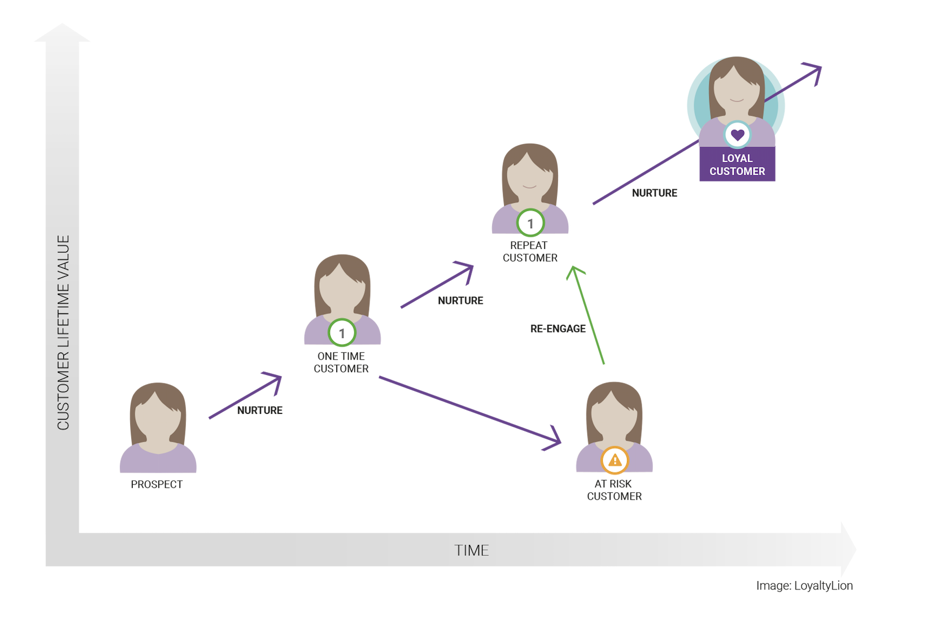Black Friday, Cyber Monday (BFCM) regularly break records … but not all of them are good. We’re used to hearing cumulative revenue in the billions.
What we’re not used to hearing is that …
For 64% of retailers, shoppers acquired during BFCM have a lower lifetime value (LTV) than shoppers acquired at any other time of the year.
The key reason for this lower LTV is BFCM shoppers either make fewer repeat purchases or never purchase from you again.
What a waste!
The good news is that the holidays aren’t just a great time for sales, they’re also the perfect opportunity to acquire more customers for coming quarters and seasons … if you know how.
This chart shows a simple overview of how customers move from one stage to another throughout their lifetime with you.
Successful holiday strategies must be built around a loyalty-driving lifecycle.
In this post, we will focus on how to move customers from ‘one time’ to ‘repeat’ and from ‘at risk’ to ‘loyal’ through personalized emails at every stage.
Don’t stop here …

Keep reading to unearth maximizing customer lifetime value far beyond the holidays.
But, if you want to go even deeper, we’ve built the ultimate Black Friday, Cyber Monday Toolbox. Everything you need to unwrap the magic of the Shopify Plus platform and make this holiday season your most profitable ever.
From One-Time Customer to Repeat Customer
This is the crucial first stage of the loyalty lifecycle …
At this moment your customer has only made one purchase and the chance of them making a second is just 27%. However, if you can achieve that second purchase, the chance they will make a third jumps significantly to 45%. This return on investment is why marketers are encouraged to dedicate at least a quarter of their marketing budget to returning customers.
So, how to get results?
1. Implement Post Purchase Loyalty Emails
This is the start of your post-purchase engagement with the customer. Most retailers will have welcome emails and post-purchase thank you emails. We recommend that you enhance these emails to include reference to the loyalty program.
For example, in the post-purchase email, let the customer know how many points they have earned and the rewards available.
In doing this, you have started your loyalty conversation with the customer and highlighted another reason for them to return. LoyaltyLion integrates with a number of email service providers (ESPs) — such as Dotmailer, Klaviyo, Bronto and HubSpot — so you can automatically enhance customer emails with loyalty information, such as point totals.
We’d previously also covered other ways to write emails people want to spend time with.
2. Make the Reward Available After First Purchase
Design your loyalty program so customers earn a reward immediately after their first purchase. Why? Because customers who redeem loyalty rewards spend twice as much as those who do not.
The reason for this jump: Rewards encourage customers to return and repeat purchase. This is why we recommend that you design your loyalty program so customers can earn a reward after their first purchase and start the loyalty cycle.
3. Send Reward Reminder Emails
To capialize on rewards, do not let your approach be one-and-done. Instead, send reward reminder emails like the example below.

The retail industry has a notoriously low clickthrough rate for emails: just 2.5%. However, emails sent via LoyaltyLion perform considerably better. Examples like the one above have a clickthrough rate of 35% and generate 3% of the entire annual revenue for retailers. Why do loyalty emails perform x14 better than marketing emails?
Crucially, the psychology of a loyalty program email is completely different. First, unlike a typical re-activation email that tries to entice customers back with an offer such as ‘get 20% off’, loyalty emails include rewards that your customers have worked to earn and they, therefore, do not want to lose.
Secondly, it is one of the few emails your customers receive that is 100% personalized because it is based on their engagement with your brand.
4. Run a Double-Point Week
Use your loyalty program to build excitement over a limited time period - run a double point week! Retailers like Riff City regularly run campaigns such as this:
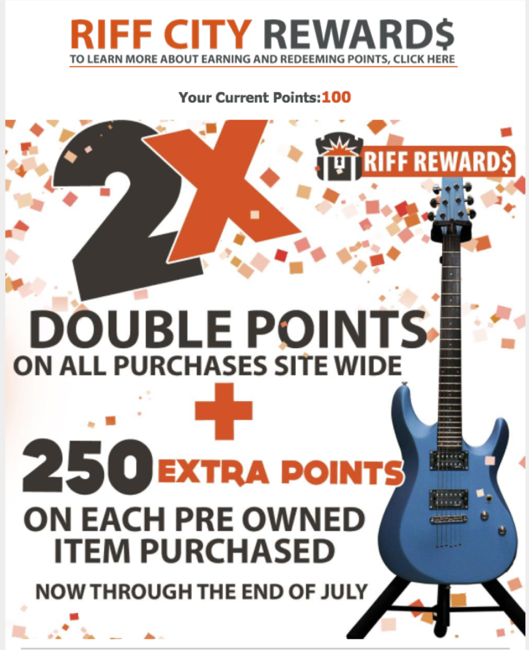
5. Award Extra Points for Visiting During January Sales
To increase participation in your January sales, double or triple the points a customer earns for a visit. Combine this promotion with an email marketing campaign and when shoppers visit your store. Then, complete the journey with a notification informing customers they have instantly earned the points.
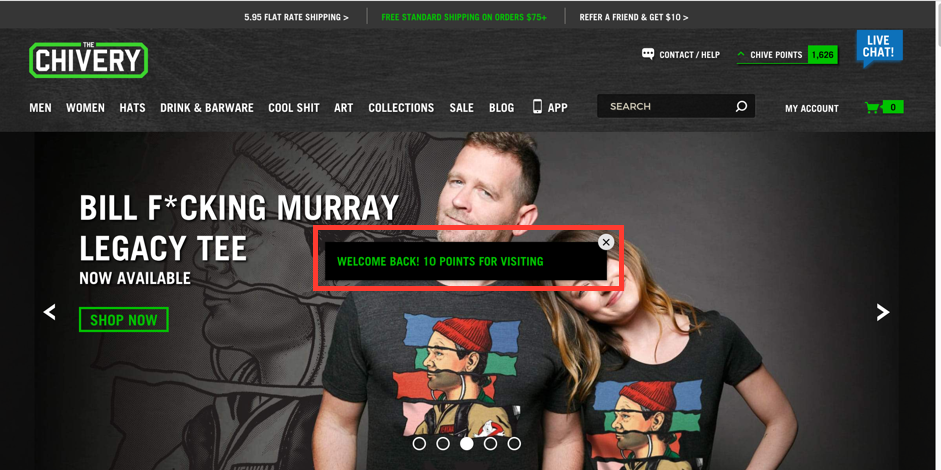
6. Give a Gift for Purchases Made in January or February
Reduce seasonal slumps by offering loyalty program members exclusive gifts if they make a purchase in January or February.
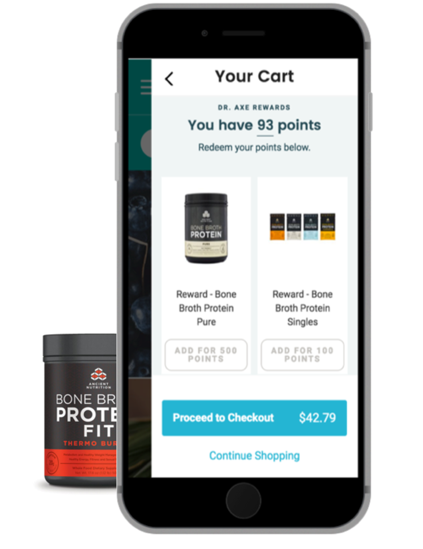
From At-Risk Customer to Loyal Customers
The term ‘at risk’ relates to the recency with which a customer has last purchased. If a customer has not purchased within an expected timeframe, they are ‘at risk.’ These boundaries will depend on your industry.
A retailer selling slippers versus one selling cosmetics will have a very different view of ‘at risk.’ Typically marketers will argue that if someone has not purchased within 6-12 months, they are at risk. For reasons mentioned above, you should avoid this oversimplification.
LoyaltyLion processes 12 month’s of order history to provide an ‘at risk’ profile that is unique to the retailer. Retailers can then see a segment of customers that need their attention. Here are three ideas you can implement.
7. Credit Customers with Points
Everyone has experienced losing their loyalty points because they were inactive. How did it make you feel?
Imagine the positive impact on brand perception when you do the opposite: give inactive customers points. Even if the customers decide not to repeat purchase, you have acted differently from other retailers, and stand a higher chance of benefiting from word of mouth advocacy.
When deciding how many points to gift, we recommend adding enough points so the ‘at risk’ customers can earn a new reward.
8. Move Customers Up a Tier
Loyalty tiers are a great way to encourage customer engagement because they typically offer more generous or exclusive rewards to customers in higher tiers. Here you can use tiers to re-engage an ‘at risk’ customer.
By moving them up a tier, you surprise and delight them and encourage them to re-engage with your business. There is also no cost to this strategy.
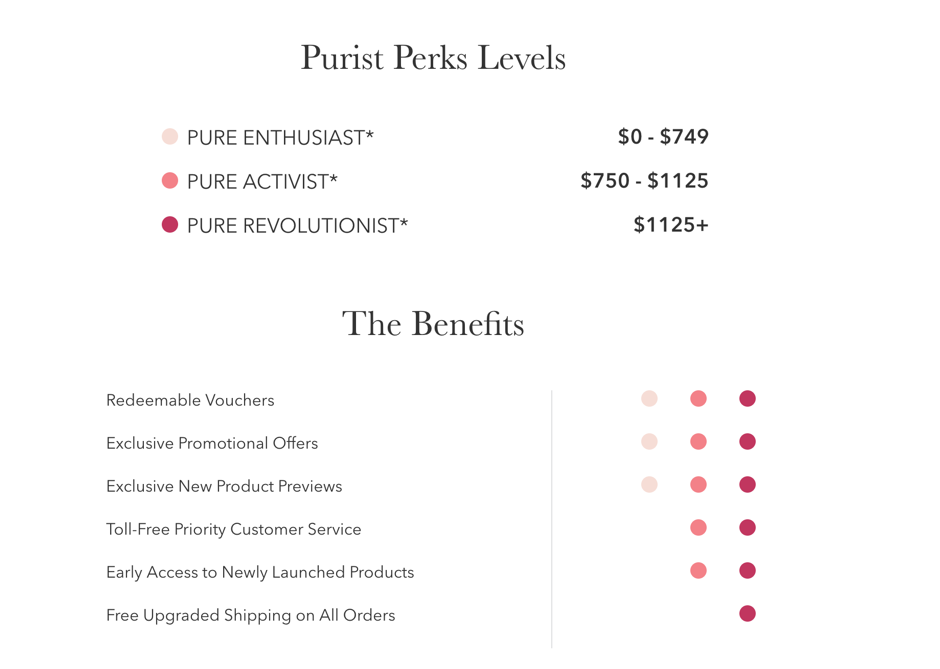
9. Give an Exclusive Reward for Loyalty Program Members
Part of the psychology of a loyalty program is that these customers are now part of a privileged group. Build upon this by offering loyalty program members exclusive rewards or access to products that can only be bought via the loyalty program.
Once you have created the reward, use your ESP to email all the eligible customers and track the results. We recommend setting a time limit, both to build urgency and to encourage a repeat purchase before the customer is defined as ‘lapsed.'
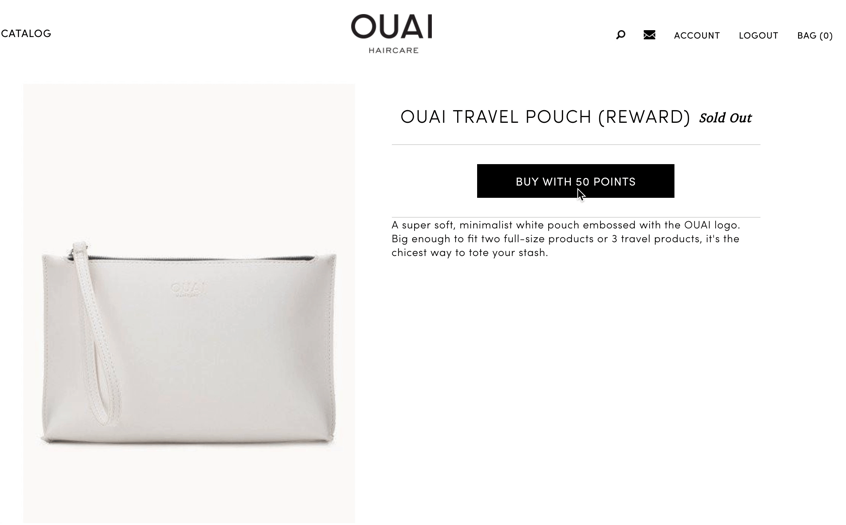
You can also use an exclusive flash sale to re-engage at-risk customers.
Increase Customer Lifetime Value Beyond the Holidays
Customers acquired during Black Friday, Cyber Monday have a lower lifetime value. This lower LTV occurs partly because these customers were being opportunistic and taking advantage of your BFCM promotions, but also because your brand loses mindshare throughout the year.
The nine strategies above will keep your brand on top of buyers’ minds, giving them a reason to return and spend more with you.
At LoyaltyLion, we recommend having a post-BFCM loyalty strategy in place before committing your acquisition spend. Only once both are in place will you see the full benefit of BFCM.
Want more holiday help?

We’ve built the ultimate Black Friday, Cyber Monday Toolbox for exactly that.
The Toolbox provides all of the apps and education you need to optimize your customer’s experience by preparing your timeline, inventory, website, staff, and communication.
In other words, you don’t have to do it alone. We can help.



